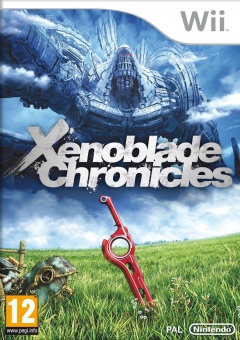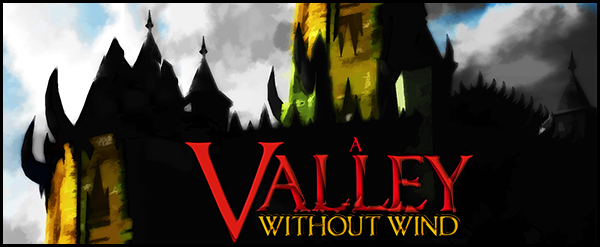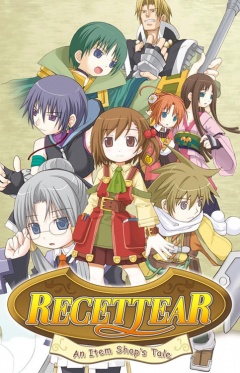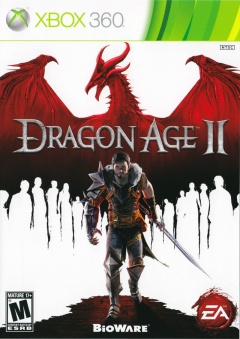action rpg
Rune Factory: Tides of Destiny
It’s been a few... months since the last first hour review, but that’s okay, I’m happy with everything else I’ve been doing with my extra time, and you’re probably happy because you’re reading this and not the comment section of my Persona 3: FES review.
So while I have your attention, let’s talk quickly about Rune Factory: Tides of Destiny. Rune Factory is a shoot-off series of Harvest Moon, and I’ve talked about both sets of games quite a bit here. I’ve never really enjoyed console Harvest Moon games since the Nintendo 64, and never played the previous console Rune Factory game, so I decided to take a chance and try out Tides of Destiny for the PlayStation 3 (also available on the Wii). Honestly, part of me just wanted a game I could play in front of the kids since Uncharted 2 and Metal Gear Solid 4 don’t go over very well.
This will be an incredibly informal first hour, as I didn’t even bother to take notes, but I suppose if you’re looking for a formal first hour review you would have gone somewhere else a long time ago.
Bastion
 Bastion made a huge splash last year when it was released on Xbox Live Arcade and Steam, reaping excellent critical reviews and huge sales, especially for an indie game. Developed by Supergiant Games and published by Warner Bros., the game’s iconic narrator and haunting soundtrack have cemented its place as one of the cornerstone independent games of this decade.
Bastion made a huge splash last year when it was released on Xbox Live Arcade and Steam, reaping excellent critical reviews and huge sales, especially for an indie game. Developed by Supergiant Games and published by Warner Bros., the game’s iconic narrator and haunting soundtrack have cemented its place as one of the cornerstone independent games of this decade.
I was impressed by its first hour last November, but reading my thoughts on Bastion’s start indicates a trend that would hold throughout the game: while the art, music, and voice acting is stellar, the gameplay is just sort of there. It’s solid, but didn’t stand out amongst the great presentation.
It took a few months and many, many games, but I returned to Bastion, restarted my adventure, and finished the game in a half-dozen sittings. Here’s my review of Bastion for the PC.
Xenoblade Chronicles
 Nearly two years after its initial Japanese release, and eight months after finding its way to Europe and Australia, Nintendo of America finally saw fit to grace North American Wiis with the critically acclaimed Xenoblade Chronicles (though not without a lot of pestering it would seem). Debuting at E3 2009 under the title Monado: Beginning of the World, Monolith Soft's latest immediately captured the attention of RPG-starved Wii owners with its large, open environments, colourful atmosphere, and intriguing storyline.
Nearly two years after its initial Japanese release, and eight months after finding its way to Europe and Australia, Nintendo of America finally saw fit to grace North American Wiis with the critically acclaimed Xenoblade Chronicles (though not without a lot of pestering it would seem). Debuting at E3 2009 under the title Monado: Beginning of the World, Monolith Soft's latest immediately captured the attention of RPG-starved Wii owners with its large, open environments, colourful atmosphere, and intriguing storyline.
Probably most intriguing, however, was the gameplay. Xenoblade—its title a tribute to Monolith's flagship franchise, Xenosaga—deviates considerably from traditional JRPGs, doing away with random encounters and turn-based combat. Instead, players do battle on the very map they explore, without a transition to a battle screen, and with the ability to see enemies long in advance, as many are simply animals going about their business in the game world. Battles themselves are much more tactical, seeing players manoeuvring about the battlefield for ideal position and using abilities at advantageous times.
Never mind that I'd been craving some decent RPG action for a while, I definitely wanted to see what Xenoblade had to offer, and was more than a little disappointed when it first looked as if I wouldn't get the chance. Better late than never, I guess. At least my Wii has something to do now besides collecting dust.
A Valley Without Wind
 There are ambitious indie games like Fez, which go all out on their insane puzzles and clever solutions. Then there are ambitious indie games like the Blackwell series, which tells a tale of death with believable characters and full voice acting. And then there are ambitious indie games like A Valley Without Wind, which features a fully procedurally generated, side-scrolling action, massively multiplayer online world.
There are ambitious indie games like Fez, which go all out on their insane puzzles and clever solutions. Then there are ambitious indie games like the Blackwell series, which tells a tale of death with believable characters and full voice acting. And then there are ambitious indie games like A Valley Without Wind, which features a fully procedurally generated, side-scrolling action, massively multiplayer online world.
Developed by Arcen Games, A Valley Without Wind is, if anything, ambitious. It’s also genre defining, I personally haven’t played a lot of action RPG 2D MMOs, but now at least one exists. Released last week for Windows and Mac, here are our impressions on the game. They’re unsurprisingly varied.
Tales of Graces f
 It was four minutes into Tales of Graces f that I met the amnesiac
with the impossible purple pigtails. She didn't know who she was, or
where she came from, or anything really. She was a deadly martial
artist, but nearly walked right off a cliff. Later she asked the meaning
of the word "friend." I threw up in my mouth a little and realized that
Graces f would be a tale quickly forgotten. In hindsight, I guess the
cover art should have served as warning.
It was four minutes into Tales of Graces f that I met the amnesiac
with the impossible purple pigtails. She didn't know who she was, or
where she came from, or anything really. She was a deadly martial
artist, but nearly walked right off a cliff. Later she asked the meaning
of the word "friend." I threw up in my mouth a little and realized that
Graces f would be a tale quickly forgotten. In hindsight, I guess the
cover art should have served as warning.
But if the whole game boiled down to waiting for the kid in the Elvis getup to realize that the king is possessed by a demon, I wouldn't have played it for almost ninety hours. Yes, a lot of time is wasted running errands through copy-paste corridors while the characters say how they feel and explain magical jargon. But then you run into a giant spider, and the kids' anime story melts away for a few seconds of glorious battle.
I'll even say that Tales of Graces f has my favorite RPG combat, taking the crown from predecessor Tales of Symphonia. Graces f layers new abilities and limitations onto Symphonia's melee-and-magic arena skirmishes, and the end result is a more dynamic structure that makes earlier games in the series look like button mashing. It's also complicated as hell.
Tales of Graces f
 The long-awaited localization of two high profile JRPGs has delighted the dwindling Wii fanbase. After years of holding out, Nintendo was finally convinced to bring potential hits Xenoblade Chronicles and The Last Story to the new world by distribution partners GameStop and XSEED, respectively. The orchestrators of last year's Operation Rainfall fan campaign deserve a pat on the back (though I was doing it before it was cool).
The long-awaited localization of two high profile JRPGs has delighted the dwindling Wii fanbase. After years of holding out, Nintendo was finally convinced to bring potential hits Xenoblade Chronicles and The Last Story to the new world by distribution partners GameStop and XSEED, respectively. The orchestrators of last year's Operation Rainfall fan campaign deserve a pat on the back (though I was doing it before it was cool).
But another Wii JRPG topped my personal wishlist, then and now: Tales of Graces. The Tales series' claim to fame is its thrilling real-time battles, and Tales of Graces looked like the next evolution of that combat system. Months turned into years as I waited for a localization announcement, eventually accepting the improbability of my playing the game.
Fortunately, Namco Bandai's love for milking the Tales series eventually prevailed; late last year, the PlayStation 3 port of Tales of Graces was confirmed for release here in North America. I've built up some expectations, no doubt aggravated by the years of waiting. For me, these first sixty minutes of Tales of Graces F weigh more heavily than a JRPG intro should. Does it crack under the pressure?
Recettear: An Item Shop's Tale
 We have time to slip one more review into 2011, right? Let's talk about Recettear: An Item's Shop Tale, a quirky Japanese RPG released last year. Blending traditional dungeon crawling with running an RPG item shop, Recettear is unlike any game I have ever played, and probably ever play again.
We have time to slip one more review into 2011, right? Let's talk about Recettear: An Item's Shop Tale, a quirky Japanese RPG released last year. Blending traditional dungeon crawling with running an RPG item shop, Recettear is unlike any game I have ever played, and probably ever play again.
I played the first hour of Recettear in October, determining that the opening was interesting enough to go on. This was probably a fair decision, as it is a rich game full of dungeons, companions, and items, but it is not without issues. If the review intrigues you, look for it on Steam sale in the next day or so, it was about $5 a few days back and may be available again.
Recettear is made up of two distinct game types: the classic dungeon crawler with randomized floor layouts, spawning bad guys, and big bosses; and an item shop where you lay out equipment, haggle with customers, and even buy items from them. Let's talk about what each type did right and wrong.
Bastion
 The Bastion narrator has been everywhere lately. To gamers like me, this reference barely means anything. But like “the cake is a lie!”, it’s beginning to ingrain into gamer culture and being in-the-know in the early stages of fun is the best part.
The Bastion narrator has been everywhere lately. To gamers like me, this reference barely means anything. But like “the cake is a lie!”, it’s beginning to ingrain into gamer culture and being in-the-know in the early stages of fun is the best part.
But that’s not why I’m playing Bastion. I’m playing Bastion because it’s been almost universally heralded as a great game by everyone I pay attention to. From the graphics to the story to the music, Bastion is the indie darling of the year.
Released as one of Xbox Live’s Summer of Arcade premier titles in July, Bastion made an immediate splash. While doing a pretty poor job advertising and selling most indie games on their market, Microsoft seems to do a pretty good job predicting which titles to really push during their summer event. A Steam version came a month later, and just last week the game finally went on sale for half price (I’m one of those obnoxious gamers who will almost never pay full price for a game, whether it’s $15 or $60).
So let’s dive into Bastion’s first hour and see if this darling has legs.
Recettear: An Item Shop's Tale
 2011 is turning into the year the Japanese RPG redeems itself in my eyes. Radiant Historia is still my favorite for game of the year, and Xenoblade: Chronicles had such a fun first hour that I can’t wait to play it in the evenings. Heck, even Golden Sun: Dark Dawn wasn’t that bad. So let’s give another one a try in Recettear: An Item Shop’s Tale, the tale of an item shop and whatever a Recettear is.
2011 is turning into the year the Japanese RPG redeems itself in my eyes. Radiant Historia is still my favorite for game of the year, and Xenoblade: Chronicles had such a fun first hour that I can’t wait to play it in the evenings. Heck, even Golden Sun: Dark Dawn wasn’t that bad. So let’s give another one a try in Recettear: An Item Shop’s Tale, the tale of an item shop and whatever a Recettear is.
Recettear is a Japanese indie game (known as “doujin”) for Windows that was translated and published outside of Japan by a pair of Something Awful users. Released last December on Steam (after a 2007 release in Japan), Recettear has seem surprisingly brisk and successful sales that will reportedly open up the market to other doujin games.
I picked up Recettear on Steam during a fire sale and it has been calling to me ever since. How the heck does a game about an item shop work? Are these screenshots showing action fighting for the same game? Let’s find out and play the first hour of Recettear: An Item Shop’s Tale.
Dragon Age II
 I was a bit worried going into my playthrough of Dragon Age 2. The first screenshots revealed a depressingly gray world with curiously pointy polygons, and reader reviews of the game blasted it for a variety of reasons. But my first hour review of the title cemented me firmly in the “I’m going to enjoy this game” category, and 40 hours later I emerged with some sore fingers and a smile on my face.
I was a bit worried going into my playthrough of Dragon Age 2. The first screenshots revealed a depressingly gray world with curiously pointy polygons, and reader reviews of the game blasted it for a variety of reasons. But my first hour review of the title cemented me firmly in the “I’m going to enjoy this game” category, and 40 hours later I emerged with some sore fingers and a smile on my face.
It’s understandable why some gamers didn’t enjoy Dragon Age 2, in some ways it’s quite a departure from the stable, Western RPG tropes that Dragon Age: Origins employed, but deep down, it really is the first game’s sequel. Some aspects have been streamlined, for better and worse, but I always felt like I was in the Dragon Age universe I spent 50 hours in last time around.
Dragon Age 2 was released for Xbox 360, PlayStation 3, Windows, and OSX. I played a used copy on the Xbox 360, meaning I didn’t have access to any downloadable content that was provided for first-time buyers.

